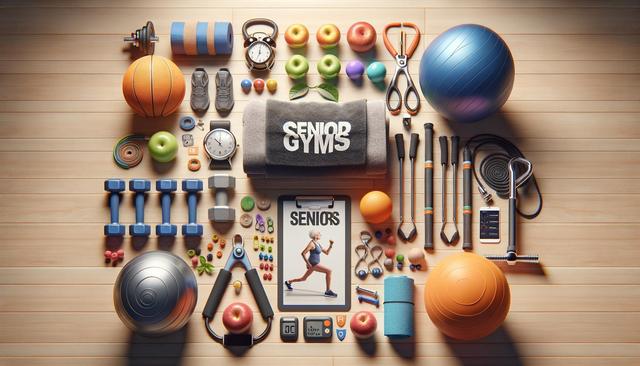Why Senior-Focused Gyms Matter
As we age, our fitness needs evolve. Senior-focused gyms are designed specifically to support older adults in maintaining an active lifestyle. These gyms offer programs that cater to age-related changes in muscle mass, joint flexibility, and balance. The environment is typically more relaxed and supportive, with professional trainers who specialize in working with older populations. This ensures that exercises are not only safe but also effective in improving overall health and wellness.
Many seniors face barriers to exercise such as chronic pain, limited mobility, or fear of injury. A gym for seniors addresses these concerns by offering accessible equipment, lower-impact workout options, and personalized fitness plans. This allows members to build confidence while staying active. Regular physical activity in a supportive setting can help reduce the risk of chronic diseases, improve mobility, and enhance mental well-being.
Top Fitness Programs Available for Seniors
Senior gyms offer a wide variety of fitness programs tailored to different ability levels and health goals. These programs often include a mix of cardiovascular training, strength-building, balance exercises, and flexibility routines. Some of the most popular and effective options include:
- Low-impact aerobics: Great for heart health and endurance without putting strain on the joints.
- Chair yoga: Helps improve flexibility and reduce stress while offering full-body engagement from a seated position.
- Water aerobics: Uses water’s resistance to provide a joint-friendly workout that enhances strength and cardiovascular health.
- Functional fitness classes: Focuses on exercises that mimic daily activities to improve independence and reduce falls.
These programs are often led by instructors trained in senior fitness, ensuring that exercises are modified as needed based on individual capabilities. Classes also foster a sense of community, which can be motivating and socially enriching.
Strength Training for Healthy Aging
Strength training becomes increasingly important with age, as it helps combat muscle loss, supports bone density, and improves metabolic health. Gyms for seniors typically incorporate resistance training into their offerings in a safe and structured manner. This could include the use of resistance bands, light weights, or even body-weight exercises tailored to individual needs.
Key benefits of strength training for seniors include:
- Improved posture and balance
- Increased muscle mass and joint stability
- Enhanced ability to perform daily tasks
- Better control of blood sugar levels and improved cardiovascular health
With proper guidance and consistency, older adults can see significant improvements in strength over time. Many gyms offer one-on-one sessions with certified trainers to ensure proper technique and progression.
Flexibility and Balance Exercises
Flexibility and balance are two essential components often emphasized in senior fitness programs. As flexibility decreases with age, it can impact mobility and increase the risk of injuries. Participating in activities that promote stretching and balance can help maintain range of motion and reduce fall risk.
Common flexibility and balance activities in senior gyms include:
- Stretching routines: Often included at the beginning and end of workouts to warm up and cool down muscles.
- Tai Chi: A slow, flowing practice known for its ability to improve balance and mental focus.
- Balance boards or stability balls: Used under supervision to strengthen core muscles and improve coordination.
These exercises complement strength and cardio training by ensuring the body remains agile and responsive. Regular practice can lead to better movement control and increased confidence in daily activities.
Social and Emotional Benefits of Senior Fitness Programs
In addition to physical health improvements, participating in a gym for seniors offers emotional and social benefits that are equally valuable. Group classes and shared workout spaces promote interaction and a sense of belonging. This social engagement can combat feelings of isolation, which are common among older adults.
Many senior fitness programs also incorporate wellness education, mindfulness sessions, and community events to support overall well-being. These holistic offerings make the gym a place not just for exercise, but for connection and personal growth. For seniors looking to stay active, joining a supportive fitness community can be a meaningful and enjoyable part of their routine.
By engaging in regular exercise and being part of a community, older adults often experience improved mood, reduced symptoms of anxiety and depression, and a greater sense of purpose. These psychological benefits contribute to a higher quality of life and a more positive outlook on aging.
Conclusion: Embracing Fitness at Every Age
Senior gyms provide valuable opportunities for older adults to stay active, healthy, and engaged. With tailored fitness programs focusing on mobility, strength, and flexibility, these spaces are built to meet the unique needs of aging bodies. Whether through low-impact aerobics or balance training, seniors can find options that fit their abilities and goals. The physical, emotional, and social benefits of regular gym participation contribute to a healthier and more fulfilling lifestyle. Choosing the right fitness program can empower seniors to maintain independence and enjoy a vibrant, active life.


